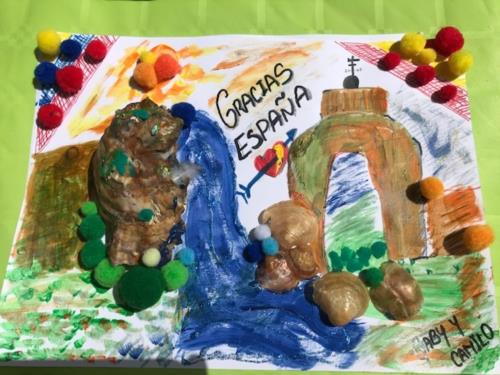
En esta pintura, realizada por una madre y su hijo, se representa el sentimiento de agradecimiento hacia el país de acogida. De este modo, a través de elementos naturales y culturales realizados con vivos colores, se representa la hermosura y riqueza del nuevo país, tanto en lo cultural como en lo natural. Es un dibujo optimista, donde la belleza supone una promesa de una mejora vital. Como símbolo de la unión entre el país de acogida y el de origen, Venezuela, en las esquinas se representan las banderas de ambos países bellamente engalanadas ///// In this painting, made by a mother and her son, the feeling of gratitude towards the host country is represented. In this way, through natural and cultural elements made with bright colors, the beauty and richness of the new country is shown, both culturally and naturally. It is an optimistic drawing, where beauty is a promise of vital improvement. As a symbol of the union between the host country and the country of origin, Venezuela, the flags of both countries are beautifully decorated in the corners.